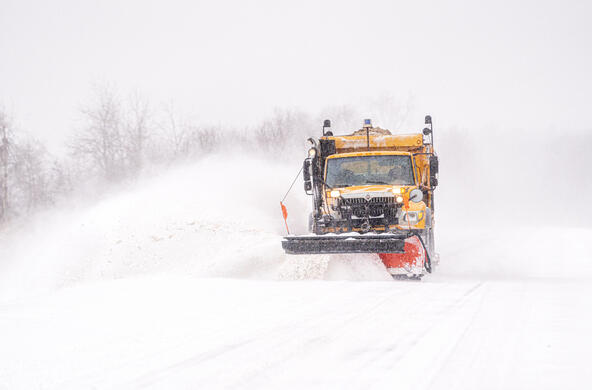Salt, it makes roads safe in the winter, but is it safe for the environment?
"In small quantities it would be safe, but not in large quantities," said Vicky Kelly, who manages environmental monitoring for the Cary Institute of Ecosystem Studies.
A winter like the present one, with numerous snow storms, has meant enormous quantities of salt have been used to keep roads ice-free.
For example, Stanley Whitehead, highway superintendent for the town of Amenia, reported using 680 tons of salt so far this winter. Robert Stevens, highway superintendent for the town of North East, reported using 1,100 tons.
County and State highway departments also purchase and use salt to maintain the county and state roads in the area.
There's no question that the application of salt to roadways has real benefits. The tireless work of local highway departments this winter ensured that roads were safe, schools were open and lives kept running with minimal disruption.
But it comes at a price. A growing body of research shows there have been cumulative costs to the environment.
"We've been measuring the salt concentrations in Wappinger Creek here at the Cary Institute since 1985. The concentrations have increased and may be leveling off, but with a great deal of year-to-year variation," said Kelly.
Any salt spread on roadways doesn't stay there, it enters water runoff and eventually makes its way into streams, lakes and groundwater, as long-term studies at the Cary Institute indicate.
"We used to think the salt was being washed away, eventually to the ocean. However, increases are evident in the summer as well as winter. Summer stream water is mostly groundwater, so the summer increases tell us that there has been accumulation of salt in our groundwater," said Kelly.
And this accumulation of salt is degrading freshwater resources. Road salt may end up compromising drinking water and having negative effects on plant and animal life.
Furthermore, because it can take decades for road salt to flush out of a watershed, increases in concentrations of salt may be seen even after its use has stopped.
How should this problem be addressed?
"We don't have a good alternative to salt," said Kelly.
The Cary Institute uses sand, which it sweeps up in the spring.
"Many municipalities in the region as well as the county and date DOTs [Departments of Transportation] have implemented steps to improve efficiency of salt. That is, they are taking steps to keep roads ice and snow free while using less salt. Those steps include automated controls on trucks that tie the salt distribution to the speed of the truck, the pavement temperature and outside conditions. This has resulted in big savings in salt with no reduction in the safety of the roads," said Kelly
"We mix our salt with sand before we apply to the roadways," said Heather Wilson, highway superintendent for the town of Pine Plains. Wilson reported purchasing 738.99 tons of salt so far this year with approximately 150 tons on hand at the present time in their stockpile.
"Even in our relatively rural community we've seen increases in the salt content of our streams. This is an issue that isn't confined to urban communities." said Kelly.








